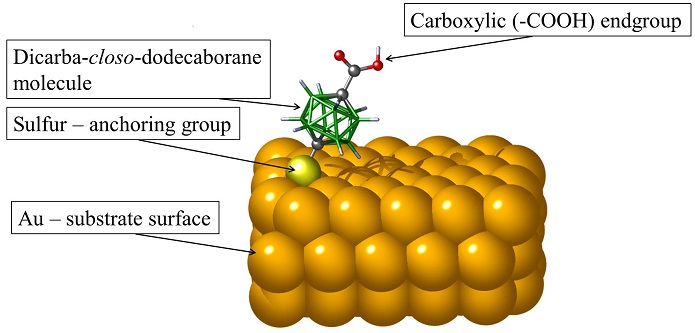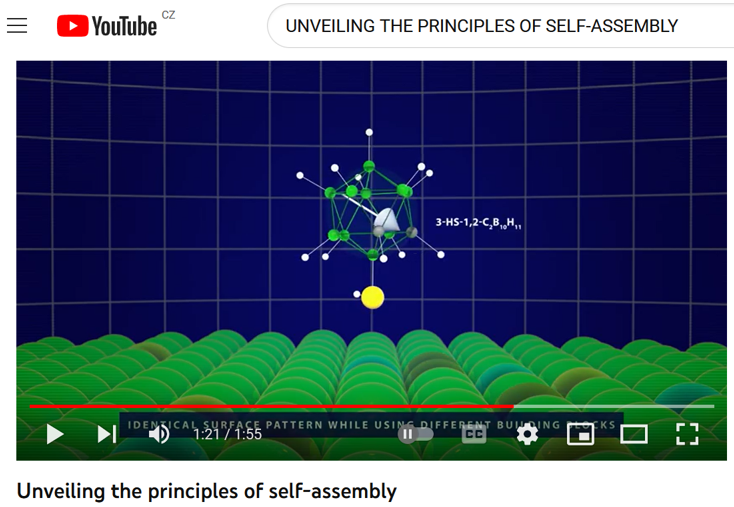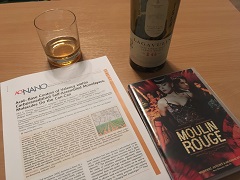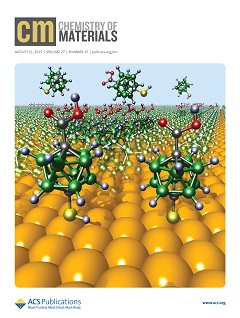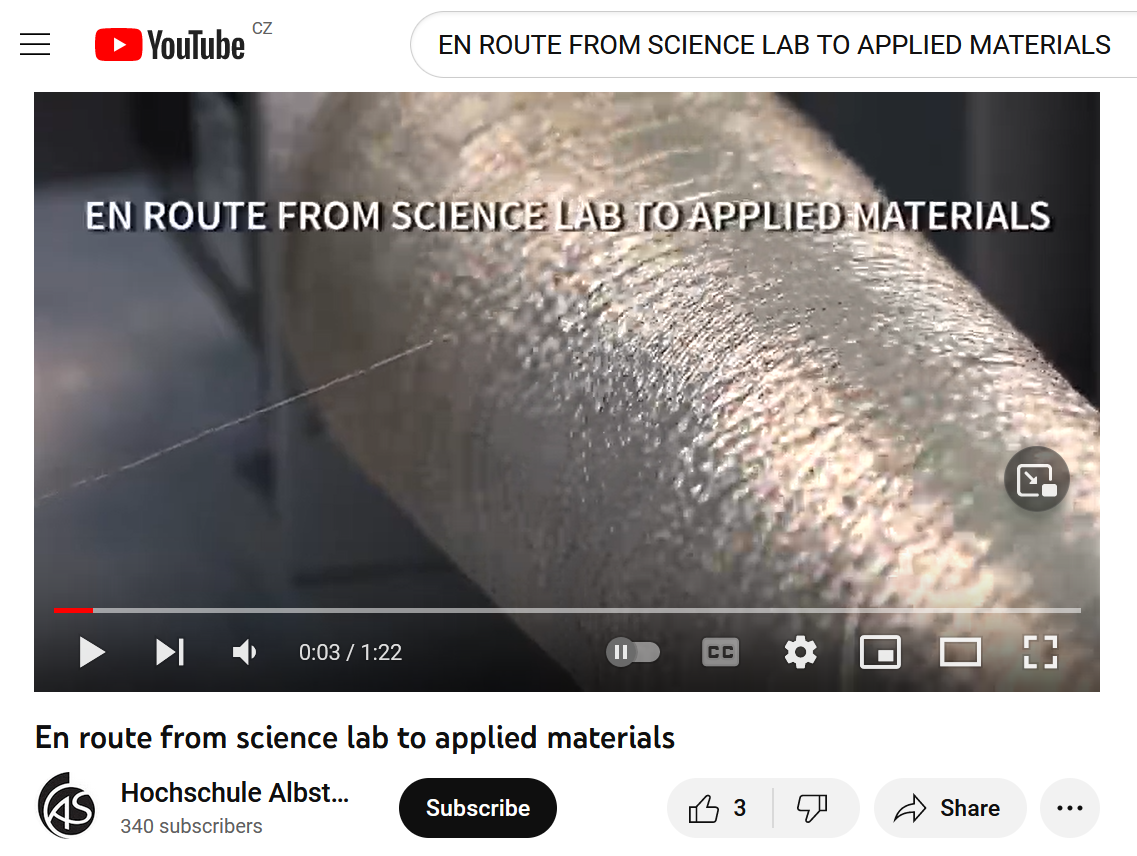Our research interest in carborane clusters as components of self-assembled monolayers covers wide range of aspects including their interaction with different metals or their use for structuring metal surfaces and tuning their physical and chemical properties.
Cluster dipoles and their orientation
Many heteroborane clusters posses a relatively high dipole moment. Figure below shows two positional isomers of 1,2-dicarba-closo-dodecaborane-dithiols anchored to a gold surface via thiolate groups. These cluster molecules are relatively strong dipoles oriented on the surface oppositely. Their SAMs have been shown to influence the surface work function. SKPFM investigation of the modified silver surfaces shows that the potential difference between them is about 300 mV. Our further investigation in this area is going towards exact tuning of the surface potential value by controlling their co-adsorption.
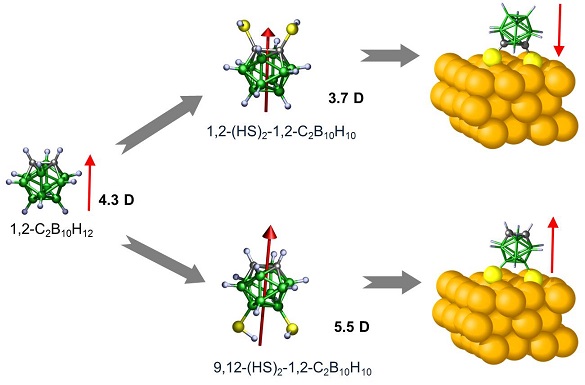
Read more at
and
Range of cluster architectures
Boron hydrides have significantly enriched the area of structural inorganic chemistry. These cluster compounds form robust and rigid 3-dimensional architectures as a consequence of their electron deficiency. We have focused our attention primarily on thiolated dicarba-closo-dodecaboranes (often reffered to just as carboranes) of general formula (SH)x-C2B10H12-x. Their geometry is derived from a nearly regular icosahedron which is deviated from its ideal symmetric architecture by the replacement of two BH for two CH vertices. Nevertheless we have focused on further cluster shapes such as decaborane with a reactive open-face with four acidic bridging hydrogens facing upward from the surface. The structure of decaborane can be regarded as a fragment of icosahedral geometry without two vertices.
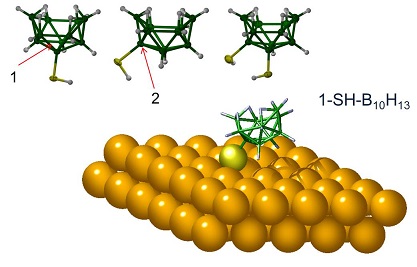
Read more at
Self-Assembled Monolayers on Ag and Cu
Investigation of other metals such as silver and copper does not only provide useful basis for comparison with the data obtained on gold surfaces but, in comparison to gold, both silver and copper have greater application potential. We have investigated the interaction of two basic dicarba-closo-dodecaborane derivatives with these two metal surfaces too. In case of silver we have focused on the capacity of different cluster molecules and their SAMs to make an effective barrier protecting the substrate surface against corrosion by H2S. Their superior properties in the protection of silver against corrosion are related to their stability and defect-free monolayers.
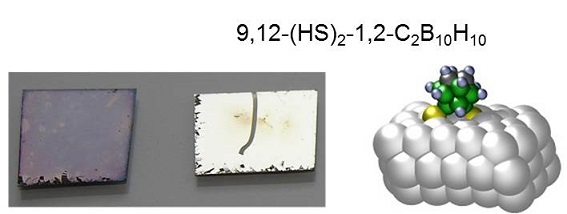
Read more at
A different aspect which is of interest to us is the low capacity of 1,2-dicarba-closo-dodecaborane-1,2-dithiol [1,2-(HS)2-1,2-C2B10H10] to adsorb on a Cu(0) surface. The Auger CuLMM spectrum of sample (2) shows bulk copper, Cu(0), as a result of the exposure of a freshly deposited copper film to a solution of 1,2-dicarba-closo-dodecaborane-1,2-dithiol. We have observed the crucial role of a small amount of oxygen pre-adsorbed on a freshly deposited copper film for the preparation of the carborane-thiolate self-assembled monolayer. More detail investigation revealed different reactivity of C-SH and B-SH carborane derivatives with copper surfaces too.
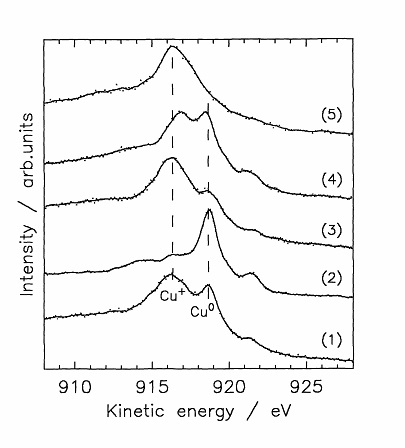
Read more at
New functional cluster molecules for SAMs
We have developed synthetic strategies towards new functional cluster molecules. Particurly useful for tuning electronic, structural and various physico-chemical properties of surfaces are new derivatives with different functional endgroups attached to their SAMs. A cluster derivative of p-mercaptobenzoic acid derived from p-carborane [1-(SH)-12-(COOH)-1,12-C2B10H10] has been recently synthesized in our laboratories and used as an essential building block for monolayer-modified metal surfaces. This research direction opens the dicarba-closo-dodecaborane thiolate SAMs to other areas such as biochemistry or surface coordination and supramolecular chemistry.
